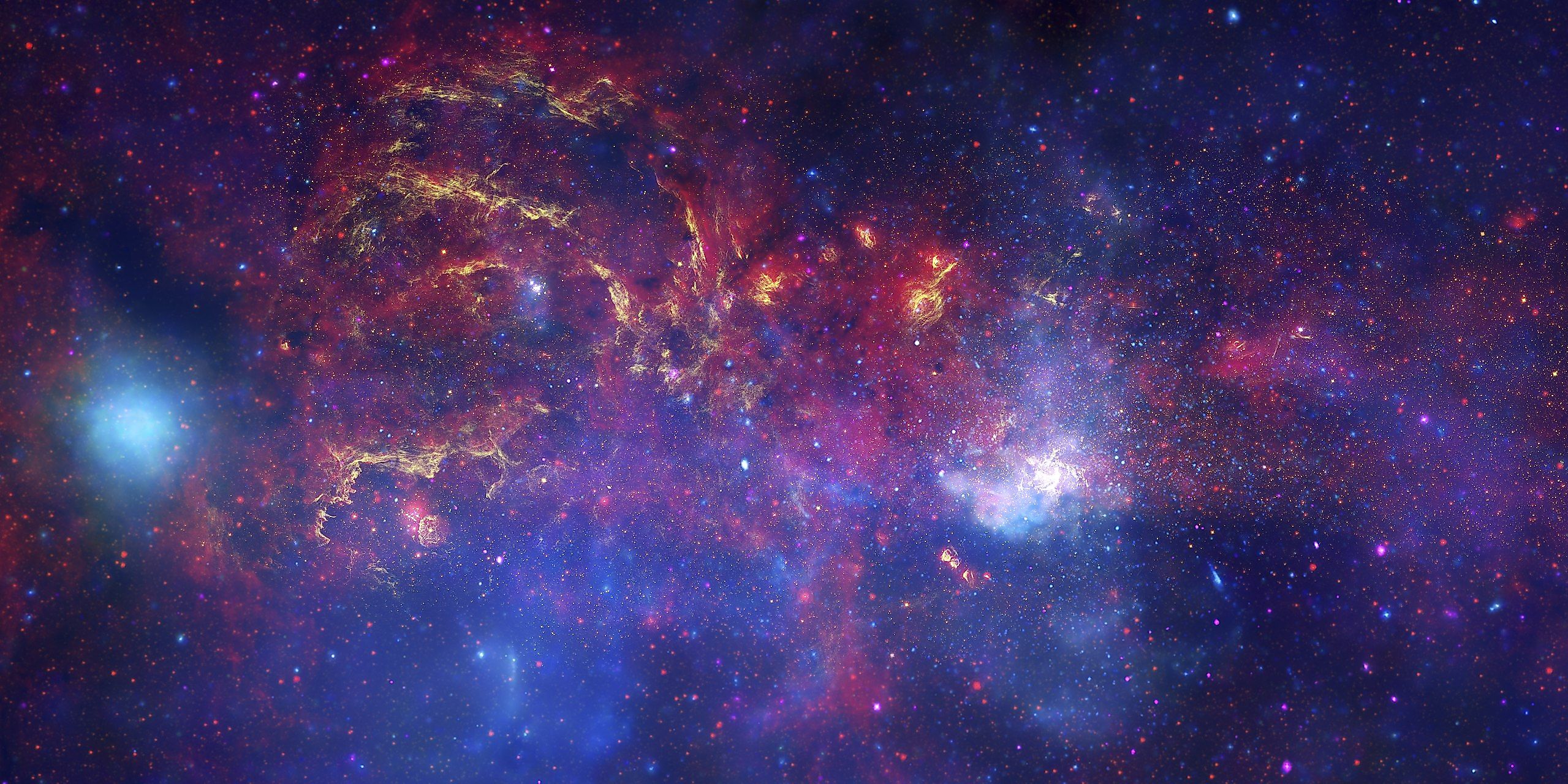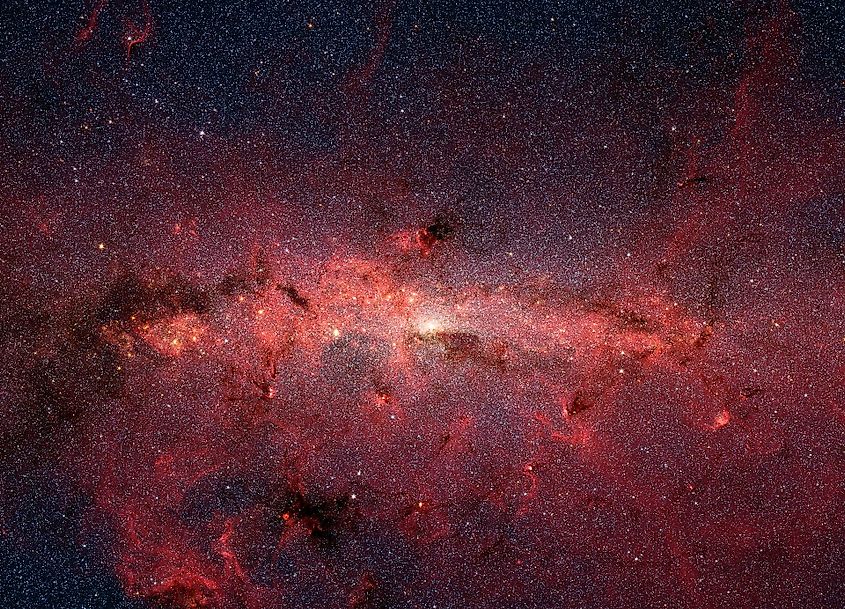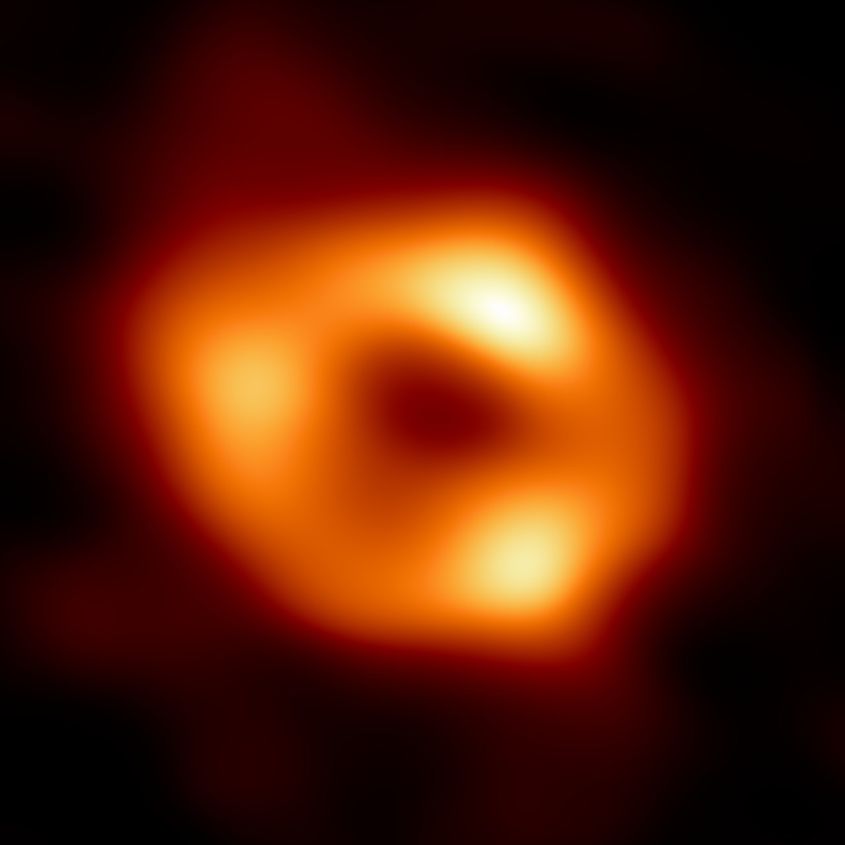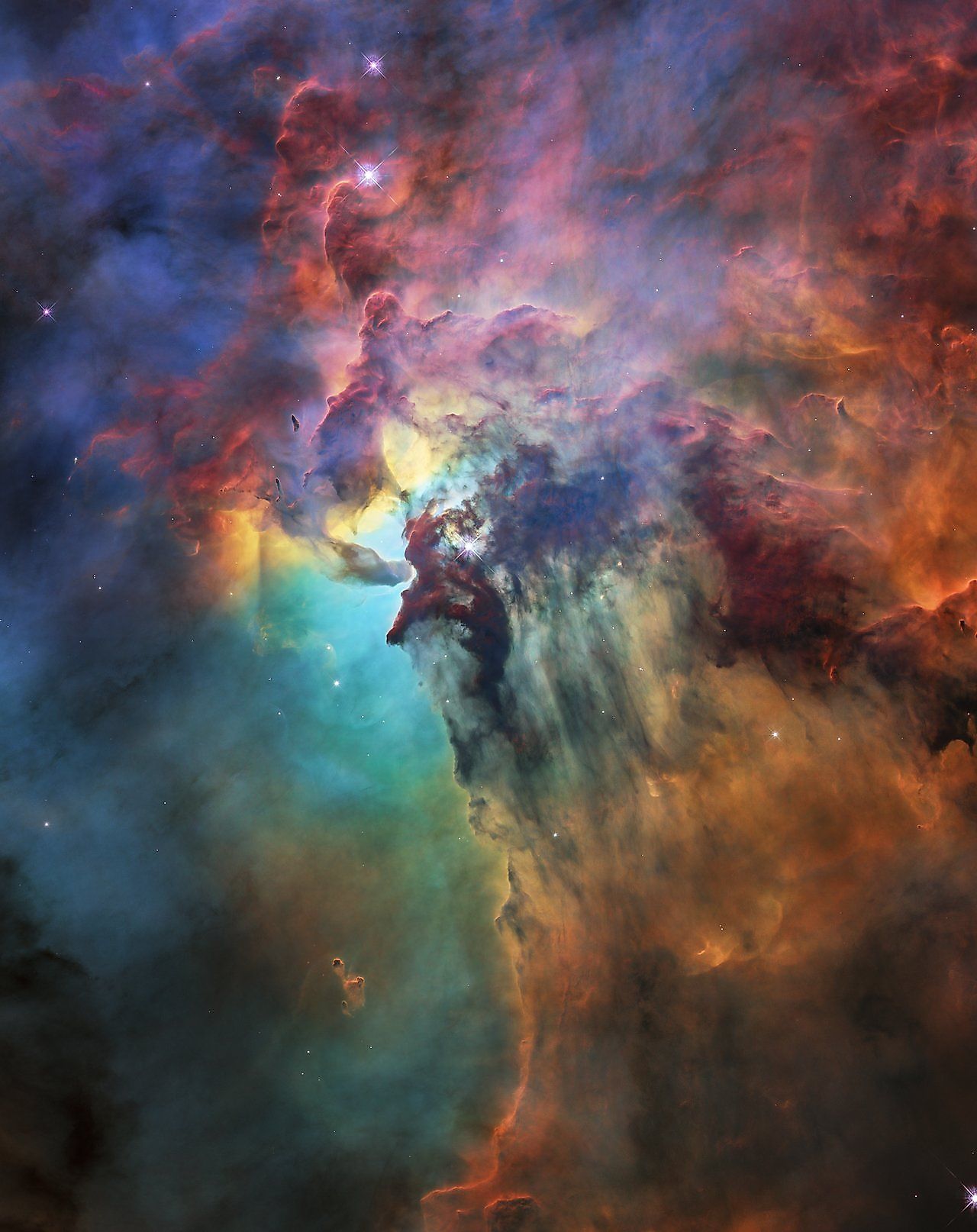
What Is At The Center Of The Milky Way?
The center of the Milky Way galaxy is located nearly 30,000 light years from our solar system. For decades, the central region of our galaxy was a complete mystery. The center of the Milky Way is largely hidden from view by dense clouds of interstellar gas. It is impossible to view the center of our galaxy in visible light, and so astronomers use other wavelengths of light to observe what is going on in this mysterious region of our galaxy.
The Heart Of The Milky Way

The central region of the Milky Way is a strange, chaotic place. As you move closer to the center, stars become more densely packed together, as do nebulae. Star formation is common near and around the center as higher densities cause hydrogen gas to clump together and collapse, leading to the formation of a new generation of stars. Surrounding the center are also multiple globular star clusters. These star clusters are vast globs of old, red stars that can contain anywhere from thousands to millions of stars. Vast pillars of interstellar gas, called filaments, exist above and below the galactic core, following the magnetic field lines of our galaxy.
The Galactic Core

For years, one of the biggest mysteries of the galactic core was the fact that, as you approach the center, stars begin moving at tremendous speeds along extreme orbits. The exact center of our galaxy is completely hidden from view, not just in visible light, but other wavelengths of light as well. Rather than determine directly what lies at the core of the Milky Way, astronomers use indirect means, such as the orbital path and velocities of stars. In order for massive stars to move along the observed orbits and at the speeds they move at, astronomers believe that the center of our galaxy is home to a supermassive black hole called Sagittarius A*. By knowing the orbital periods of some stars, astronomers have been able to calculate the size and mass of Sagittarius A*. The supermassive black hole at the center of our galaxy is around one-million times the mass of the sun and has a diameter of 16-million miles (26-million kilometres). Interestingly, despite the difficulties in observing the exact center of our galaxy, astronomers have managed to take a direct image of the accretion disk around Sagittarius A*. Using the Event Horizon Telescope, astronomers released the first-ever image Sagittarius A* on May 12, 2022.











